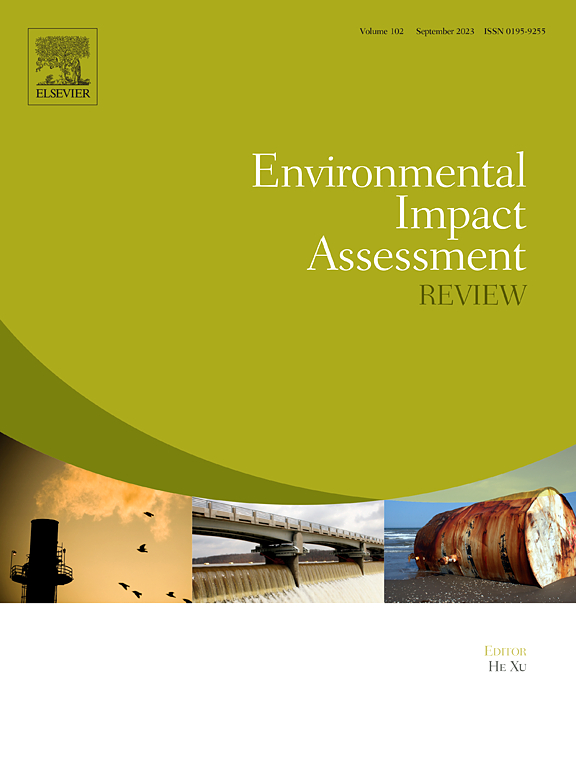在寒冷地区评估材料、驾驶模式和气候条件对电池电动汽车和氢燃料电池汽车的生命周期环境影响
IF 9.8
1区 社会学
Q1 ENVIRONMENTAL STUDIES
引用次数: 0
摘要
电池电动汽车(BEV)和氢燃料电池汽车(HFCV)可以减少全球道路交通领域的温室气体(GHG)排放,从而在应对气候变化方面发挥重要作用。关于轻质材料的使用、驾驶模式和气候对寒冷地区生命周期温室气体排放的影响的研究十分有限。为了解决这一局限性,我们开发了一个框架来评估寒冷地区的 18 种 BEV 和 4 种 HFCV 情景,通过对传统 BEV 和基于碳纤维增强塑料(CRFP)的 BEV 的驾驶模式(农村、城市和高速公路驾驶)和气候条件(即夏季、温和冬季和严寒冬季)的组合来考虑上述参数。考虑到加拿大地处寒冷地区,我们利用现有的 HFCV 数据对加拿大进行了案例研究。我们评估了传统 HFCV 和基于碳纤维增强塑料的 HFCV 在夏季的城市驾驶和严冬条件下的高速公路驾驶。结果显示,夏季城市中的温室气体排放量最低,基于 CFRP 的 BEV 生命周期温室气体排放值为 68.7 g CO2 eq/km。在严冬条件下的高速公路上,传统 HFCV 的生命周期温室气体排放量最高,为 364.4 g CO2 eq/km。运营阶段是造成生命周期温室气体排放的主要因素,生产阶段紧随其后。分析表明,对于夏季在城市中行驶的基于 CFRP 的 BEV 来说,最敏感的参数是车辆寿命,而对于冬季在高速公路上行驶的传统 HFCV 来说,最敏感的参数是燃料电池效率。分析还显示了寒冷地区生命周期温室气体排放的范围,严冬条件下高速公路上的传统 HFCV 排放量最高(331.0 g CO2 eq/km),夏季情景下城市中基于 CFRP 的 HFCV 排放量最低(51.0 g CO2 eq/km)。本文章由计算机程序翻译,如有差异,请以英文原文为准。
Assessment of life cycle environmental impacts of materials, driving pattern, and climatic conditions on battery electric and hydrogen fuel cell vehicles in a cold region
Battery electric vehicles (BEVs) and hydrogen fuel cell vehicles (HFCVs) can play an important role in addressing climate change by diminishing greenhouse gas (GHG) emissions in the worldwide road transportation sector. There is limited research on the implications of the use of lightweight materials, driving pattern, and climatic impact on the life cycle GHG emissions in a cold region. To address this limitation, we developed a framework to assess eighteen BEV and four HFCV scenarios for a cold region that consider aforementioned parameters through a combination of driving patterns (in rural, city, and highway driving) and climatic conditions (i.e., summer, mild winter, and severe winter) for both conventional and carbon fiber-reinforced plastic (CRFP)-based BEVs. A case study was conducted for Canada, considering its cold regions, using available data for HFCVs. We assessed city driving in summer and highway driving in severe winter conditions for conventional and CFRP-based HFCVs. The results show that the lowest GHG emissions are in cities in summer, with life cycle GHG emissions values of 68.7 g CO2 eq/km for CFRP-based BEVs. The highest life cycle GHG emissions are 364.4 g CO2 eq/km with conventional HFCVs on the highway in severe winter conditions' scenario. The operation phase emerges as the primary contributor to life cycle GHG emissions, closely trailed by the production phase. The analysis shows that the most sensitive parameters for CFRP-based BEVs in the city in summer scenario are vehicle lifetime and for conventional HFCVs in the highway in severe winter scenario, fuel cell efficiency. The analysis also shows the range of life cycle GHG emissions for a cold region, with conventional HFCVs on highways in severe winter conditions exhibiting the highest emissions (331.0 g CO2 eq/km) and CFRP-based HFCVs in the city in summer scenario the lowest (51.0 g CO2 eq/km).
求助全文
通过发布文献求助,成功后即可免费获取论文全文。
去求助
来源期刊

Environmental Impact Assessment Review
ENVIRONMENTAL STUDIES-
CiteScore
12.60
自引率
10.10%
发文量
200
审稿时长
33 days
期刊介绍:
Environmental Impact Assessment Review is an interdisciplinary journal that serves a global audience of practitioners, policymakers, and academics involved in assessing the environmental impact of policies, projects, processes, and products. The journal focuses on innovative theory and practice in environmental impact assessment (EIA). Papers are expected to present innovative ideas, be topical, and coherent. The journal emphasizes concepts, methods, techniques, approaches, and systems related to EIA theory and practice.
 求助内容:
求助内容: 应助结果提醒方式:
应助结果提醒方式:


